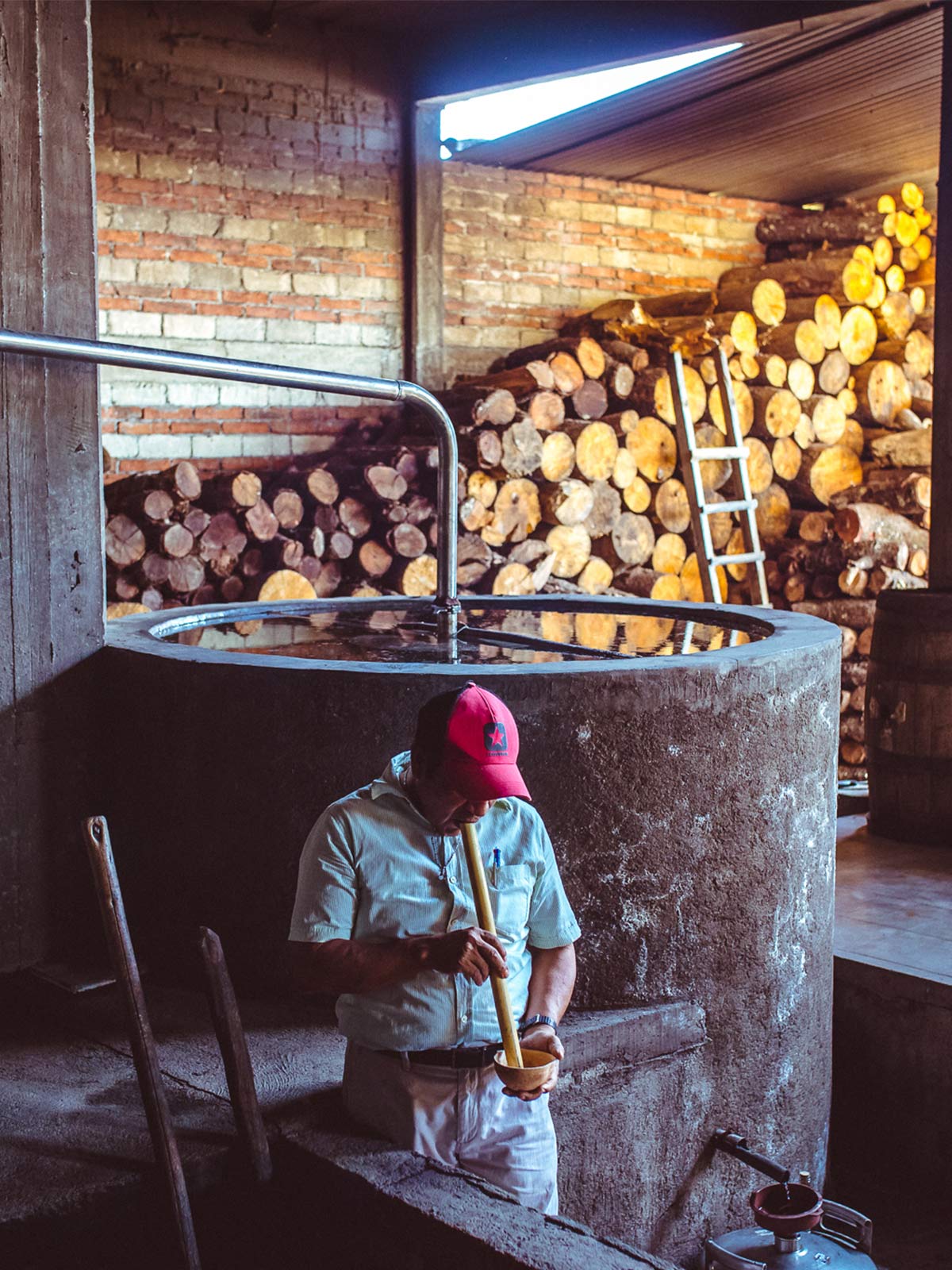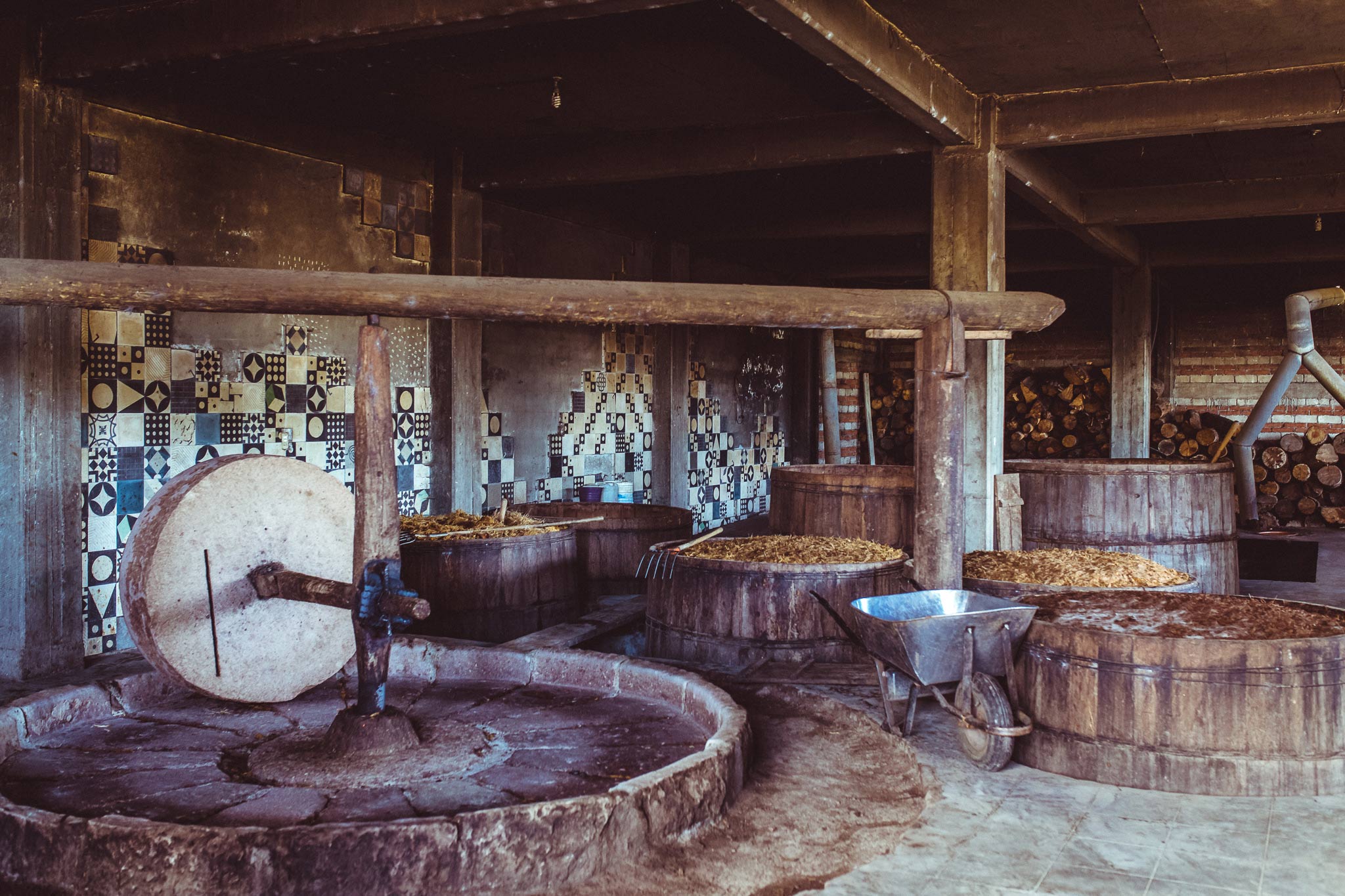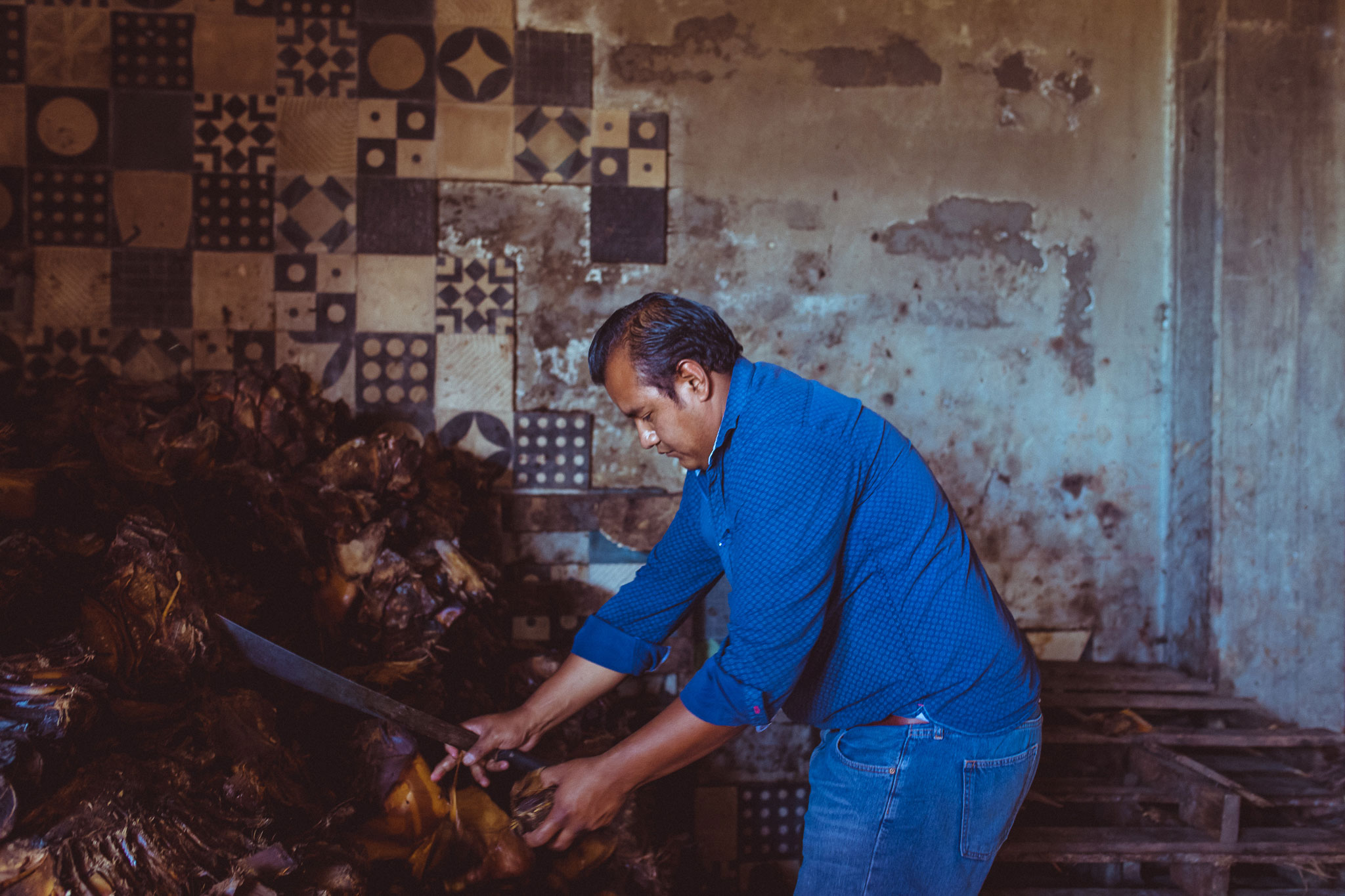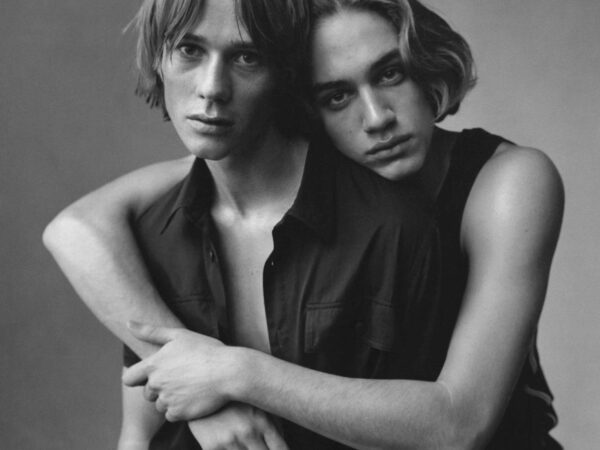Tucked away at the ancient mezcal grounds in Oaxaca, Gem & Bolt is bringing mezcal into the sustainable future, while resisting the mass-produced tequila trap.
The roads through Oaxaca’s Central Valley are lined with sunflowers and sugarcane. Echoes of traditional, pre-hispanic intercropping practices are everywhere; maize, grain, and beans grow side by side in the same lush fields. We pass a small agave field, with spiked rows bisected by the rippling fronds of banana trees. This is the center of mezcal production, but, despite the spirit’s recent rise in popularity, it is no monoculture.
As we drive to the Gem & Bolt mezcal distillery, Vicente Reyes, the brand’s director of operations, explains that this biodiversity is at the heart of what distinguishes mezcal from tequila. To Reyes, tequila, mass-produced from blue agave farmed in vast drone-monitored monocrops and processed in factories, represents industrialization, uniformity, and standardization.
Above The Fold

Sam Contis Studies Male Seclusion

Slava Mogutin: “I Transgress, Therefore I Am”

The Present Past: Backstage New York Fashion Week Men’s Spring/Summer 2018

Pierre Bergé Has Died At 86

Falls the Shadow: Maria Grazia Chiuri Designs for Works & Process

An Olfactory Memory Inspires Jason Wu’s First Fragrance

Brave New Wonders: A Preview of the Inaugural Edition of “Close”

Georgia Hilmer’s Fashion Month, Part One

Modelogue: Georgia Hilmer’s Fashion Month, Part Two

Surf League by Thom Browne

Nick Hornby: Grand Narratives and Little Anecdotes

The New Helmut

Designer Turned Artist Jean-Charles de Castelbajac is the Pope of Pop

Splendid Reverie: Backstage Paris Haute Couture Fall/Winter 2017

Tom Burr Cultivates Space at Marcel Breuer’s Pirelli Tire Building

Ludovic de Saint Sernin Debuts Eponymous Collection in Paris

Peaceful Sedition: Backstage Paris Fashion Week Men’s Spring/Summer 2018
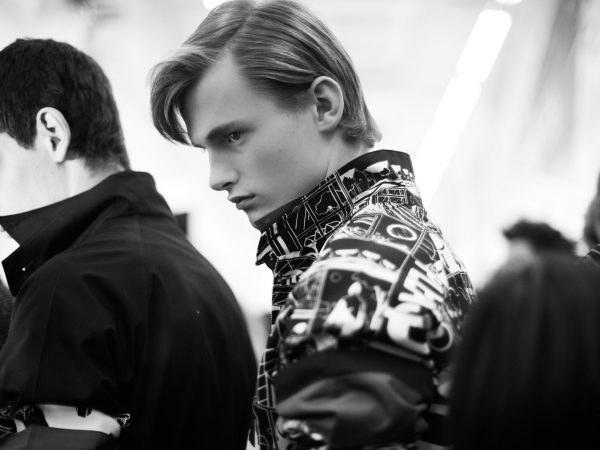
Ephemeral Relief: Backstage Milan Fashion Week Men’s Spring/Summer 2018

Olivier Saillard Challenges the Concept of a Museum

“Not Yours”: A New Film by Document and Diane Russo

Introducing: Kozaburo, 2017 LVMH Prize Finalist

Introducing: Marine Serre, 2017 LVMH Prize Finalist

Conscious Skin

Escapism Revived: Backstage London Fashion Week Men’s Spring/Summer 2018

Introducing: Cecilie Bahnsen, 2017 LVMH Prize Finalist

Introducing: Ambush, 2017 LVMH Prize Finalist

New Artifacts

Introducing: Nabil Nayal, 2017 LVMH Prize Finalist

Bringing the House Down

Introducing: Molly Goddard, 2017 LVMH Prize Finalist

Introducing: Atlein, 2017 LVMH Prize Finalist

Introducing: Jahnkoy, 2017 LVMH Prize Finalist

LVMH’s Final Eight

Escaping Reality: A Tour Through the 57th Venice Biennale with Patrik Ervell

Adorned and Subverted: Backstage MB Fashion Week Tbilisi Autumn/Winter 2017

The Geometry of Sound

Klaus Biesenbach Uncovers Papo Colo’s Artistic Legacy in Puerto Rico’s Rainforest

Westward Bound: Backstage Dior Resort 2018

Artist Francesco Vezzoli Uncovers the Radical Images of Lisetta Carmi with MoMA’s Roxana Marcoci

A Weekend in Berlin

Centered Rhyme by Elaine Lustig Cohen and Hermès

How to Proceed: “fashion after Fashion”

Robin Broadbent’s Inanimate Portraits

“Speak Easy”

Revelations of Truth

Re-Realizing the American Dream

Tomihiro Kono’s Hair Sculpting Process

The Art of Craft in the 21st Century

Strength and Rebellion: Backstage Seoul Fashion Week Autumn/Winter 2017

Decorative Growth

The Faces of London

Document Turns Five
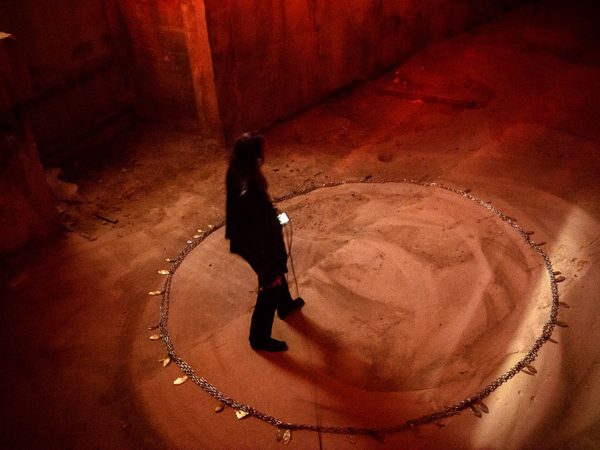
Synthesized Chaos: “Scholomance” by Nico Vascellari

A Whole New World for Janette Beckman

New Ceremony: Backstage Paris Fashion Week Autumn/Winter 2017
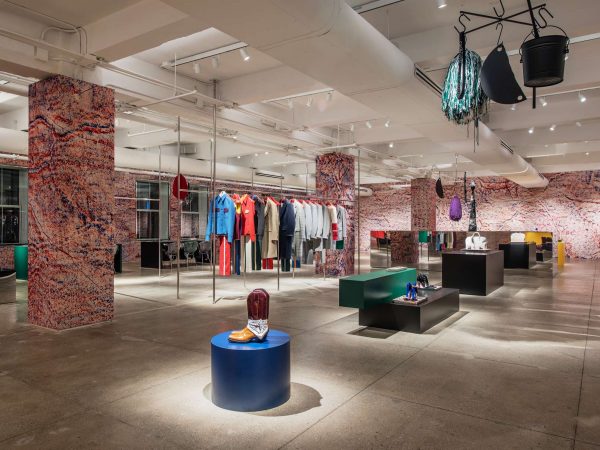
New Perspectives on an American Classic

Realized Attraction: Backstage Milan Fashion Week Autumn/Winter 2017

Dematerialization: “Escape Attempts” at Shulamit Nazarian

“XOXO” by Jesse Mockrin

Brilliant Light: Backstage London Fashion Week Autumn/Winter 2017

The Form Challenged: Backstage New York Fashion Week Autumn/Winter 2017

Art for Tomorrow: Istanbul’74 Crafts Postcards for Project Lift

Inspiration & Progress

Paskal’s Theory of Design

On the Road

In Taiwan, American Designer Daniel DuGoff Finds Revelation

The Kit To Fixing Fashion

The Game Has Changed: Backstage New York Fashion Week Men’s Autumn/Winter 2017

Class is in Session: Andres Serrano at The School

Forma Originale: Burberry Previews February 2017

“Theoria”

Wearing Wanderlust: Waris Ahluwalia x The Kooples

Approaching Splendor: Backstage Paris Haute Couture Spring/Summer 2017

In Florence, History Returns Onstage

An Island Aesthetic: Loewe Travels to Ibiza

Wilfried Lantoine Takes His Collection to the Dancefloor

A Return To Form: Backstage New York Fashion Week Spring/Summer 2018

20 Years of Jeremy Scott

Offline in Cuba

Distortion of the Everyday at Faustine Steinmetz

Archetypes Redefined: Backstage London Fashion Week Spring/Summer 2018

Spring/Summer 2018 Through the Lens of Designer Erdem Moralıoğlu

A Week of Icons: Backstage Milan Fashion Week Spring/Summer 2018

Toasting the New Edition of Document

Embodying Rick Owens

Prada Channels the Wonder Women Illustrators of the 1940s
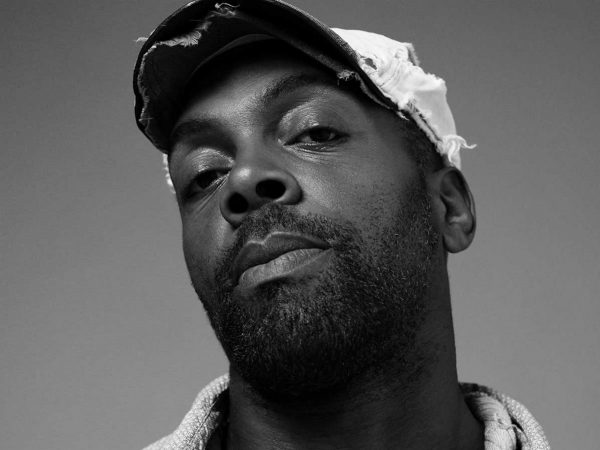
Andre Walker’s Collection 30 Years in the Making

Fallen From Grace, An Exclusive Look at Item Idem’s “NUII”

Breaking the System: Backstage Paris Fashion Week Men’s Autumn/Winter 2017

A Modern Manufactory at Mykita Studio

A Wanted Gleam: Backstage Milan Fashion Week Men’s Autumn/Winter 2017

Fashion’s Next, Cottweiler and Gabriela Hearst Take International Woolmark Prize

Beauty in Disorder: Backstage London Fashion Week Men’s Autumn/Winter 2017

“Dior by Mats Gustafson”

Prada’s Power

George Michael’s Epochal Supermodel Lip Sync

The Search for the Spirit of Miss General Idea

A Trace of the Real

Wear and Sniff

Underwater, Doug Aitken Returns to the Real
“The NOM [Norma Oficial Mexicana], or law, for tequila only allows for one species, although in Jalisco there are many species of agave they can use,” he explains. “It was a trend in the 19th century. The Industrial Revolution was defining how things were.”
Throughout its history, mezcal was periodically banned as a means of economic and cultural oppression, limiting its production to small-scale, family-run distilleries—or palenques. Today, the industry remains artisanal; before distillation, the agave hearts are roasted in an earth-pit oven, mashed by a giant, mule-pulled rolling stone, then stored in open-air vats for wild fermentation. When we arrive at the Gem & Bolt palenque, Ignacio Martinez, a fourth generation master mezcalero, demonstrates the traditional method for testing alcohol content by using a sugarcane stalk to blow bubbles into a cup of freshly distilled product and assessing the liquid’s reaction.
A Oaxaca native, Reyes speaks of mezcal with a degree of romance and reverence, noting its cultural significance rooted in ancient myth, ritual, and medicine. Gem & Bolt founder Elliott Coon fondly refers to him as Oaxaca’s “lover and protector of mezcal”—before joining the company, he ran Sistema Producto Maguey-Mezcal De Oaxaca, an NGO dedicated to the protection and promotion of the local mezcaleros. As mezcal’s international popularity grows and the industry expands to accommodate—between 2011 and 2017 the number of mezcal producers nearly tripled—Reyes sees responsible scaling as a balance between traditional and sustainable practices.
While the mezcal boom has attracted wine and spirits giants such as Davos, Bacardi, and Pernod Ricard to the valley, Coon and Reyes are confident in the safeguards preventing the industrialization of mezcal. “There are a lot of protective forces, among them Vicente, watching over the growth of mezcal so that it doesn’t become compromised and misappropriated in the way that has happened with tequila,” Coon comments. Most importantly, the vast majority of arable land in Oaxaca is communally owned, preventing liquor conglomerates from transforming the landscape into expansive, environmentally harmful monocrops. This means that any involvement in the mezcal industry necessitates involvement with the local community: those with the right to work the land. “If you want to succeed and actually enter the mezcal industry in a respectful way, this is the first concept you have to understand,” Reyes explains. “You have to engage with the community, you have to get them involved. And this is not a matter of helping. This is a matter of considering the indigenous communities as partners.”
Even if the mezcal production stays artisanal, however, the growing industry still poses a threat to the environment. The production process creates a significant amount of solid and liquid waste, and carbon emissions from the pit roasting process are high. Reyes’ first step in moving the mezcal industry to a regenerative model is creating a sustainable palenque with Gem & Bolt. “The intention is to engineer a facility in such a way that embraces all traditional production methods but almost entirely diminishes its significant carbon footprint,” Coon explains. “It will focus on the use of alternative technology to produce clean energy from the waste of the production process, accompanied by the design of a uniquely engineered earth pit oven that minimizes the amount of wood.”
Once they have created a sustainable palenque, Coon and Reyes hope to share Gem & Bolt’s regenerative methods with their neighboring community of producers and beyond. Reyes’ vision far exceeds the brand—he sees potential for the mezcal industry in Oaxaca to be one of the first examples of a circular economy. “I don’t want to sound like an alarm, but this is one of the very, very, few artisanal industries that actually exist now in the world that can actually teach us how to do things differently.”


